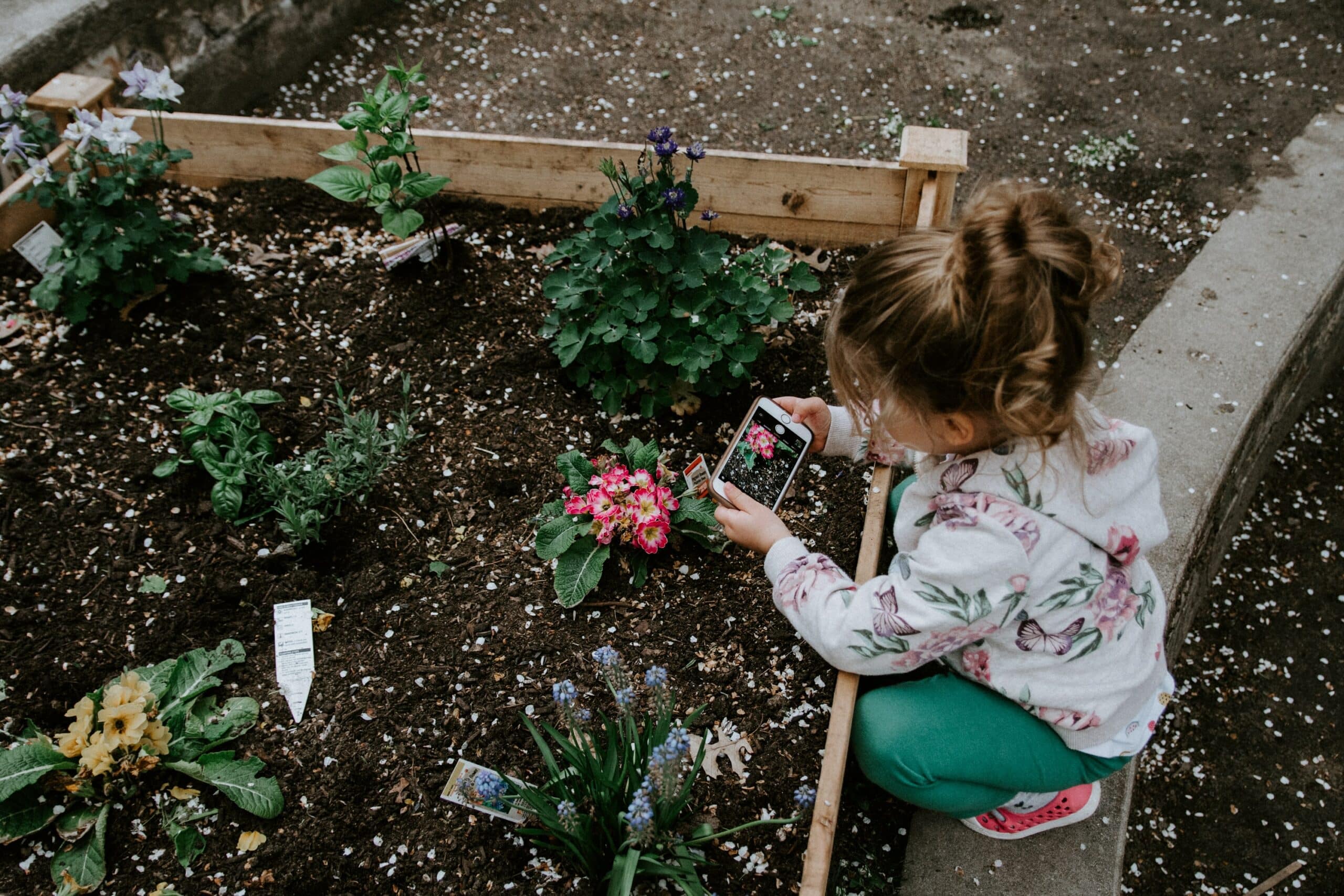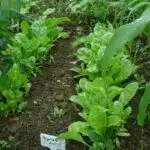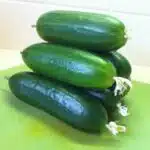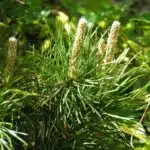Have you ever felt as though you have a green thumb, but lacked the space to really take advantage of it? Container gardening may be the perfect solution for those of us with limited outdoor space. With a few simple steps, anyone can turn their balcony, patio, or rooftop into a lush garden oasis. Let’s explore the wonderful world of container gardening and discover all that it has to offer!
Container gardening is becoming an increasingly popular method for growing plants in an urban environment. It allows people who don’t have access to large backyard plots to still enjoy the beauty and bounty of nature. Unlike traditional gardens, container gardens require little maintenance and are an excellent way for even novice gardeners to get started on their horticultural journey.
Whether you want to grow vegetables, herbs, flowers, or succulents, there is something for everyone in container gardening. In addition to being relatively low-maintenance and space-saving, container gardening also offers flexibility when it comes to planting options – as different plants thrive better in various types of containers. Furthermore, with the right set-up and care plan, your garden can provide you with beautiful blooms throughout each season!
Ready to learn more about how you can create your own gorgeous container garden? Then buckle up – because we’re about to dive into all the tips and tricks you need to know about successful container gardening!
Benefits Of Container Gardening
Container gardening has many benefits. First, it’s a great way to enjoy the beauty of flowers and plants without having to commit to a large garden plot. Plus, container gardens can be tailored to any size space or budget. You don’t need a lot of money or even a yard to have an attractive garden – just some creativity and the right containers!
Another advantage of container gardening is that it allows you to control soil quality and drainage better than traditional gardens. With pots and planters, you can choose the best soil for your specific plants and make sure they get the exact nutrients they need for optimal growth. You also don’t have to worry about weeds taking over your garden like you would with an open-air plot.
Finally, container gardening lets you move plants around depending on the season or sunlight availability in your area so that everything gets enough sun and stays healthy. This flexibility makes it easy to create beautiful, dynamic displays that change with the seasons – something that can be difficult with traditional gardens.
This versatility also extends beyond just placement; there are countless types of containers that come in all shapes, sizes, materials, colors, and designs.
Container Types And Materials
The world of container gardening is a vibrant and varied one, offering gardeners the ability to create something extraordinary even in small spaces. With its lush colors and eye-catching shapes, it can be like stepping into an oasis of beauty. As with all kinds of gardening, however, there are certain considerations that need to be taken into account when selecting the right container for your plants.
There’s a wide range of materials and types available for container gardening. Plastic containers come in a variety of sizes and colors, making them ideal for many plants. Clay or ceramic pots are also popular options as they have good drainage properties and provide excellent insulation for roots. Then there are wooden planters – these can give a more natural look to any outdoor space but need regular maintenance to prevent decay or rot.
No matter which kind of material you choose, make sure it’s strong enough to support the weight of your plantings and that it has enough drainage holes at the bottom to avoid overwatering. Additionally, opt for containers that won’t easily blow over in windy conditions as this could cause harm to both the plants and pot itself. With just a bit of thoughtfulness, you can find the perfect container to suit your garden needs!
Selecting The Right Soil
Remember when having a green thumb was considered a skill? Well, that’s not the case anymore. With container gardening, anyone can become an expert gardener in no time! The third step in starting your container garden is selecting the right soil.
Firstly, you’ll want to make sure you get soil specifically meant for containers. This is because regular soil contains too much clay and other materials that are bad for drainage. With container gardening, drainage is key. You don’t want your plants sitting in water after it rains or after you water them. To ensure proper drainage and aeration, most potting soils contain sphagnum peat moss, composted bark, and perlite or vermiculite.
Next up is fertilizing your soil so that your plants have enough nutrients to grow. Again, this will depend on what type of plant you have chosen to grow in your container garden. If you’re unsure of what kind of fertilizer to use for a particular type of plant, check with your local nursery or look it up online. Additionally, if you’re using organic fertilizers like compost tea or fish emulsions they need to be applied more frequently than chemical fertilizers do since they break down quickly in the soil.
Now that we’ve established the basics of selecting the right soil for container gardening, let’s move on to some practical tips to get started with planting!
Practical Container Gardening Tips
When it comes to container gardening, there are some practical tips to keep in mind. Firstly, think about drainage. Containers should have drainage holes or slits at the bottom so that excess water can escape and the soil can dry out a bit between waterings. Additionally, you should use quality potting mix specifically designed for containers, as soil from your yard could be too heavy and cause your plants not to thrive.
Regularly check the moisture level of your container garden. If it’s been a few days since you’ve watered and the top inch or two of soil is still slightly damp, wait a couple more days before watering again to avoid root rot. And don’t forget that containers can dry out quickly in hot weather, so you might need to water them daily during summer months.
Finally, make sure you’re giving your plants enough light. With container gardening it’s easy to move them around if they’re not getting enough sun or shade – just find a new spot! From carefully selecting the right soil to providing adequate drainage and sunlight, these practical tips will help ensure that your plants stay healthy and happy all season long.
Now that you know how to care for your plants in containers, it’s time to find the ideal location for them!
Choosing The Ideal Location
Choosing the ideal location for a container garden is like finding the perfect spot for a picnic. It requires careful consideration as to where it should go, taking into account various elements of your outdoor space. In this section, we will look at how to find the best place for your container plants to thrive.
To start off, you’ll want to think about the amount of sunlight that the area gets throughout the day. Too much sun might cause wilting and scorching of plants, while too little could lead to weaker and slower growth. You should also consider air circulation around the containers in order to avoid any stagnant air or humidity around them.
Finally, think about access to water as some parts of your garden may be easier than others when it comes time to give your plants a good drink. Depending on your setup, you may need an extra-long hose or a watering can so make sure this is taken into consideration before planting anything in that special spot! With these tips in mind, we can now move onto watering considerations for our container garden.
Watering Considerations
Have you ever asked yourself, how much water should I use for container gardening? It’s an important question to consider when starting your garden. Proper watering is vital in order to ensure that your plants receive the nutrients they need. Here are some watering considerations for container gardening.
First of all, it’s essential to check soil moisture levels before and after watering. If it’s too dry or too wet, this can cause problems with plant growth. To gauge soil moisture level, insert a finger into the soil up to the first knuckle and feel if it’s still damp or not. If the soil feels dry, then it needs water; if not, wait until it does before watering again.
It’s also important to make sure that containers have adequate drainage holes so excess water doesn’t accumulate in them and rot the roots of your plants. You can also add mulch on top of your soil to help retain moisture and prevent weeds from growing around your plants.
In addition, if you’re using a hose or sprinklers for irrigation purposes, make sure that you don’t over-water your plants as this can lead to root rot and other problems like fungal diseases or pests infestations. Lastly, be sure to water at ground level instead of from above as this will encourage healthy root growth and prevent disease spread from one plant to another.
Appropriate Plants For Containers
The vibrant colors of flowers in full bloom, the sound of water trickling from the watering can and the smell of fresh soil – these are all part of container gardening. It’s an easy way to bring life and beauty to any outdoor space. But what plants should you choose for your container garden?
When selecting plants for your containers, think about their size and shape, as well as their sun and soil needs. Some plants will require more sunlight than others, so make sure you know which ones need more light. Additionally, consider how much space you have in each pot – if it’s a small pot, opt for smaller plants that won’t outgrow it quickly. Also pay attention to how often they need watering – some need frequent watering while others only require occasional watering.
Finally, don’t forget that there are a wide variety of plants that can thrive in containers. Herbs are great options and many vegetables do well too! Experiment with different kinds of flowers and foliage to create a unique container garden that is both beautiful and functional. With the right combination of plants, your container garden will be flourishing in no time!
Now that you know how to select the right plants for your container garden, let’s talk about fertilizing and feeding them for optimal growth.
Fertilizing And Feeding Container Plants
When it comes to fertilizing and feeding container plants, it’s important to understand how much fertilizer is needed for the individual plants. There are several types of fertilizers, including organic and chemical options. Organic fertilizers are made from natural ingredients, while chemical fertilizers contain synthetic nutrients. When selecting a fertilizer, it’s important to consider the type of plant you’re growing and its specific needs.
For best results, use a slow-release fertilizer so that you don’t have to continually re-apply throughout the season. It’s also important to monitor pH levels in your soil. If the soil is too acidic or alkaline for your plants, then you may need to adjust it with an appropriate amendment such as lime or sulfur.
Finally, remember that over-fertilization can be just as damaging as not enough – so only add fertilizer when necessary and in moderation. A good rule of thumb is to start out by applying half of the recommended amount on the package label and then increase slowly if needed. With careful monitoring and attention to detail, you can ensure your container plants get all of the nourishment they need! Now it’s time to move on to pest control for container gardens…
Pest Control For Container Gardens
As with any garden, pest control is a key step in a successful container gardening journey. One might imagine the intricate web of life in a lush garden, with beneficial insects and pollinators working alongside us to protect plants from harmful pests. But for container gardens, there are special considerations that need to be taken into account when it comes to keeping bugs at bay.
The first step towards eliminating pests from your containers is to make sure that you start off with healthy plants. You can do this by purchasing plants from a reputable nursery or seed company, as well as inspecting them closely before bringing them home. Additionally, you’ll want to be mindful of any potential pest problems that could arise when introducing new plants into your existing container garden.
Finally, it’s important to monitor your containers regularly for signs of pests or disease and act quickly if something does arise. There are many natural and organic options available for controlling pests including companion planting, spraying plants with water or neem oil, and handpicking insects off the leaves. With some vigilance and regular maintenance you can keep your containers free of pests without resorting to harsh chemicals.
Key Considerations For Container Gardening
Container Gardening is becoming increasingly popular among gardeners. In fact, more than 80% of households in the United States have at least one container garden. With its many benefits, it’s no wonder that people are turning to this method of gardening. But before starting your own container garden, there are some key considerations that need to be taken into account.
When deciding what type of containers to use for your plants, think about how much sun and water they will need. If you live in a hot climate, opt for deeper containers with better drainage than shallow ones. It’s also important to choose materials that won’t leach toxins into the soil or the water you’re using to water the plants. Additionally, if you’ll be moving your plants around often, make sure the containers are lightweight and easy to handle.
Lastly, don’t forget about fertilization and soil amendment. Soil amendments can help improve drainage as well as add nutrients back into the soil for healthier plant growth. When it comes to fertilizers, use an organic fertilizer specifically formulated for container gardens – this will help ensure healthy and strong growth throughout the season. With these key considerations in mind, you’ll soon be ready to start one of your own container gardens! Now let’s look at what needs to be done when it comes time for overwintering container plants…
Overwintering Container Plants
When it comes to container gardening, overwintering plants is just as important as planting them in the first place. For example, if you live in a colder climate and want to keep your plants alive through the winter season, you will need to take extra steps to protect them. This can include moving indoor or into a sheltered area, adding insulation or other barriers to the container, and keeping them watered regularly.
But there are also many other considerations when it comes to overwintering container plants. It’s important to choose the right types of plants that are suitable for your climate and that can survive winter temperatures. Additionally, you should check how often they need watering and whether they require any special care during this time. You should also make sure that whatever containers you use are sturdy enough to withstand any weather changes throughout the winter months.
Finally, don’t forget about fertilizing your plants during this time too. Regular fertilization will help ensure that plants stay healthy and strong going into springtime bloom. With these simple tips in mind, you’ll be well on your way to successful overwintering for your container garden!
Container Gardening Design Tips
Container gardening is like putting together a puzzle, where each piece needs to fit together perfectly for the desired outcome. Designing a container garden can be tricky and requires careful planning, but the end result can be truly stunning. The current H2 provides 12 tips on how to design a container garden that will make your outdoor space come alive.
First, consider the size of the containers you want to use. A greater number of smaller pots will provide more versatility in design than fewer large-scale planters. Next, think about the location of your containers; if you place them too close to one another, their roots may become crowded and cause issues with growth. Additionally, take into account how much sunlight each plant will need and group accordingly; sun-loving plants should be placed in sunny spots and shade-loving plants should be kept away from direct light.
Finally, mix things up by creating texture and color contrasts between different elements in your design. For example, combine trailing annuals with upright perennials for visual appeal or use bold colors alongside muted shades for contrast. With these tips in mind, you’ll have all the tools necessary to create an eye-catching container garden that adds life to any outdoor space!
Benefits Of Container Gardening In Small Spaces
Container gardening is an excellent way to bring life to small spaces. It allows you to get creative with design, and have a beautiful outdoor area in areas where space is limited. In this article, we’ll explore the benefits of container gardening in small spaces.
First of all, container gardening makes use of vertical space and aids in maximizing small areas. You can add trellises or hanging planters to make the most out of your available space. Additionally, it’s easy to move containers around if needed and rearrange them as desired. This makes it simple to switch up your garden’s look whenever you like or incorporate different colors or sizes for variation.
On top of that, container gardening is low maintenance and doesn’t require a lot of time for upkeep. With proper watering and care guidelines, it’s easy to keep plants healthy without having to dedicate hours each week maintaining them. Plus, since the soil is contained within the potting material, there’s no need to worry about weeds taking over your garden!
Container gardens are an ideal choice for those looking to bring some greenery into their home without taking up too much space or time. Now let’s turn our focus onto combining containers and plant varieties for a unique look!
Combining Containers And Plant Varieties
Container gardening is like a breath of fresh air for small spaces. It’s an oasis of creativity, allowing gardeners to get creative with their plants and containers. Combining different types of containers with various plant varieties can create a beautiful display in any backyard or balcony.
When it comes to combining the two elements, there are many variables to consider. The size and shape of the container will determine how many different varieties of plants you can fit inside. You’ll also need to think about what kind of soil and drainage requirements each plant needs, as well as where the container should be placed for optimal sunlight exposure.
Finally, take into account how much maintenance each variety needs. Some may require frequent watering and pruning while others may need more room or space in order to thrive. With careful consideration and attention to detail, you can create a captivating container garden that will bloom throughout the season. Now that we’ve gone over combining containers and plants together, let’s look at troubleshooting container gardening problems.
Troubleshooting Container Gardening Problems
Container gardening has become increasingly popular, as it allows us to bring the joy of growing plants into even the smallest of spaces. However, even with all the advantages that come with container gardening, challenges can still arise. As such, it’s important for us to be aware of the potential difficulties that might come up and how to solve them. So today we’re looking at Troubleshooting Container Gardening Problems.
It’s often easy to forget just how much work goes into maintaining a healthy garden in a small space: from regular watering and fertilizing to pest control and pruning. But when done correctly, container gardens can be incredibly rewarding – not only for our own enjoyment but also for creating habitats for beneficial wildlife like butterflies and birds. Unfortunately, even with all that effort, things don’t always go according to plan. Plant diseases can occur or plants can suffer from nutrient deficiencies due to improper soil conditions or improper watering practices.
Fortunately, there are several steps we can take to troubleshoot any problems that crop up with our container gardens. First and foremost is making sure the soil is well-draining yet retains moisture adequately; too much or too little water can lead to a variety of issues. Additionally, regularly checking for pests and diseases will help keep your plants healthy and free from damage caused by insects. Finally, providing adequate nutrition through proper fertilization is key – both in terms of preventing nutrient deficiencies as well as promoting growth and blooms in flowering plants.
In short, there are many potential problems that may arise when caring for a container garden – but there are also plenty of solutions! With a bit of knowledge and preparation, we’ll be better equipped to tackle any issues that may arise along the way so we can enjoy our beautiful potted garden without worry or hassle.
Frequently Asked Questions
What Is The Best Way To Keep Weeds Out Of My Container Garden?
When it comes to container gardening, one of the most challenging aspects is keeping out weeds. Weeds can quickly take over a garden if they’re not managed properly. Fortunately, there are some simple steps to follow that can help keep weeds at bay and make your container garden thrive.
One of the best ways to prevent weeds from growing in your container is by using weed-resistant fabric or landscaping cloth. This material is designed to keep light and air away from the soil, which prevents weed seeds from germinating and taking root. You can also spread a layer of mulch on top of your containers, which will act as an additional barrier against weeds.
Finally, make sure you’re regularly checking for any weed growth in your containers and removing them immediately. Taking the time to pull up any emerging weeds before they can spread their seed heads will go a long way in preventing a weed invasion in your garden!
How Do I Know If I Need To Repot My Plants?
When it comes to container gardening, repotting is important to ensure your plants remain healthy and happy. Repotting involves transferring a plant into a larger pot or container. Knowing when to repot your plants can be tricky though. Here are some tips to help you decide if it’s time to repot your plants.
One sign that you need to repot is when your plant’s roots have completely filled up the pot. If this has happened, then it’s time for the plant to move into a bigger pot with more soil and space for its roots to grow. Additionally, if the plant looks limp or wilted despite regular watering, then it may need a larger pot as well because there isn’t enough soil in the current one for its needs.
Another indication of needing to repot is when the water runs straight through the bottom of the pot without being soaked up by the soil and roots inside. This means that there isn’t enough soil in the pot for proper drainage and absorption of water so it needs more room in a larger pot.
Ultimately, keeping an eye on how your plants look and feel will help you determine if they need to be repotted or not. If you’re ever unsure whether or not they need a bigger home, consult with an expert at your local nursery or garden center who can give you advice on how best to care for your plants.
Are There Any Plants That Are Not Suitable For Container Gardening?
According to a recent survey, 80% of gardeners have at least one potted plant in their home. This statistic highlights just how popular container gardening has become in recent years. However, it is important to be aware that not all plants are suitable for this type of gardening.
When deciding which plants to grow in containers, there are several considerations to take into account. For example, some plants require more space or soil than is available in a pot or planter. Also, some plants may struggle with the temperature fluctuations that occur when they are kept indoors. It’s also worth noting that certain varieties of trees and shrubs may not thrive if they are kept in containers for too long as their roots need room to spread out.
Overall, before starting any container garden, it’s best to do your research and determine which types of plants are best suited for this type of gardening. By doing so, you can ensure that your plants will remain healthy and thrive for many years to come!
How Can I Make Sure My Container Garden Is Getting Enough Sunlight?
When it comes to container gardening, getting the right amount of sunlight is key. Without enough light, plants can become weak, spindly, or even die. It’s important to choose a location with plenty of access to sunlight. This could be a sunny patio area or balcony. Make sure that your container garden isn’t blocked by tall buildings or trees.
If you don’t have an ideal outdoor space for your garden, you can always bring the sun indoors. Placing containers near windowsills and skylights will give them the bright light they need. You may also want to invest in grow lights, which emit the type of energy-efficient lighting that plants need to thrive indoors.
It’s essential to monitor how much light your container garden is getting on a regular basis and adjust accordingly. Keeping track of how much direct and indirect sunlight your plants are receiving throughout the day will help ensure that they get what they need for optimal growth and health.
How Often Should I Water My Container Plants?
When it comes to container gardening, water management is one of the most important aspects. It’s vital to ensure that your plants get enough moisture, but not too much. So how often should you water your container plants?
Generally speaking, you should water your plants whenever the soil feels dry. To test this, stick your finger into the soil and see if it’s damp or dry. If it’s dry, then it’s time to give them a drink! However, keep in mind that different types of plants may require different amounts of water – for instance, succulents don’t need as much as other types.
It’s also important to remember that containers tend to dry out faster than gardens in the ground do because they lack insulation and their roots can’t reach deep down into the soil for more moisture. So be sure to check on your plants regularly and adjust accordingly. With proper care, you’ll have healthy container-grown plants in no time!
Conclusion
Satire is an effective way to bring out the best in any conclusion. Container gardening is a perfect example of how we can enjoy nature without having to worry about all the pesky weeds and pests that come with traditional gardening. With a few simple tips and tricks, you can have a flourishing container garden in no time.
To begin with, keeping weeds under control is essential for successful container gardening. You can use a weed barrier fabric around the base of your containers or mulch on top of the soil to keep them from growing. Additionally, repotting your plants periodically will ensure they get enough space to thrive and will prevent overcrowding. Lastly, make sure your plants are getting enough sunlight by placing them in areas that get plenty of natural light throughout the day.
By following these tips and regularly watering your plants, you can be sure that your container garden will stay healthy and vibrant for years to come! Container gardening is an easy and fun way to enjoy nature from the comfort of your own home, so why not give it a try?





























